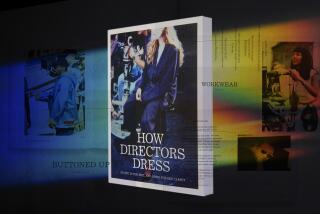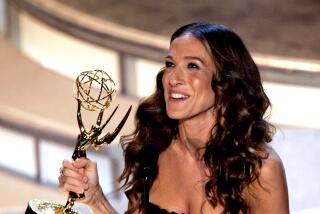Women in film
Emanuel LEVY is a film historian (“Women Move Into the Lead,” Jan. 11)? It seems to me that even the casual moviegoer could see the weakness of Mr. Levy’s argument that “for the first time in 60 years, women are on top -- or at least above the title -- with Hollywood planning and structuring high-profile movies for them.”
Perhaps most erroneously, he writes that “the most negative portrayals -- trivializing and condemning career women -- occurred just when women were beginning to make their mark off-screen [in the ‘70s],” and that “the only woman among the box-office champions of the time was Barbra Streisand.”
It has usually been the case that there are few women among the “box-office champions” of the time. But has Mr. Levy never heard of Jill Clayburgh or Jane Fonda, who along with Streisand and Ellen Burstyn starred in films that reflected the important changes that were taking place for women off-screen? I certainly think the lead characters in “Klute,” “Julia,” “An Unmarried Woman,” “It’s My Turn” and “Alice Doesn’t Live Here Anymore” are at least as strong and multi-dimensional as those played by Jennifer Lopez and Sandra Bullock in their films.
In the ‘70s and ‘80s, did he miss all the female-centered films starring such women as Sally Field (“Norma Rae”), Jessica Lange (“Frances”), Goldie Hawn (“Private Benjamin”), Bette Midler (“The Rose”), Meryl Streep (“Sophie’s Choice”), Sissy Spacek (“Coal Miner’s Daughter” ) and Diane Keaton (“Annie Hall”), to name a few?
Then there are the women who headlined movies through the ‘50s, ‘60s and beyond, including Katharine Hepburn, Audrey Hepburn, Elizabeth Taylor and Shirley MacLaine. While not all of these films were box-office successes, at least the films got made within the Hollywood studio system and the actresses continued to work.
Adam Lazarus
West Hollywood
More to Read
Only good movies
Get the Indie Focus newsletter, Mark Olsen's weekly guide to the world of cinema.
You may occasionally receive promotional content from the Los Angeles Times.










